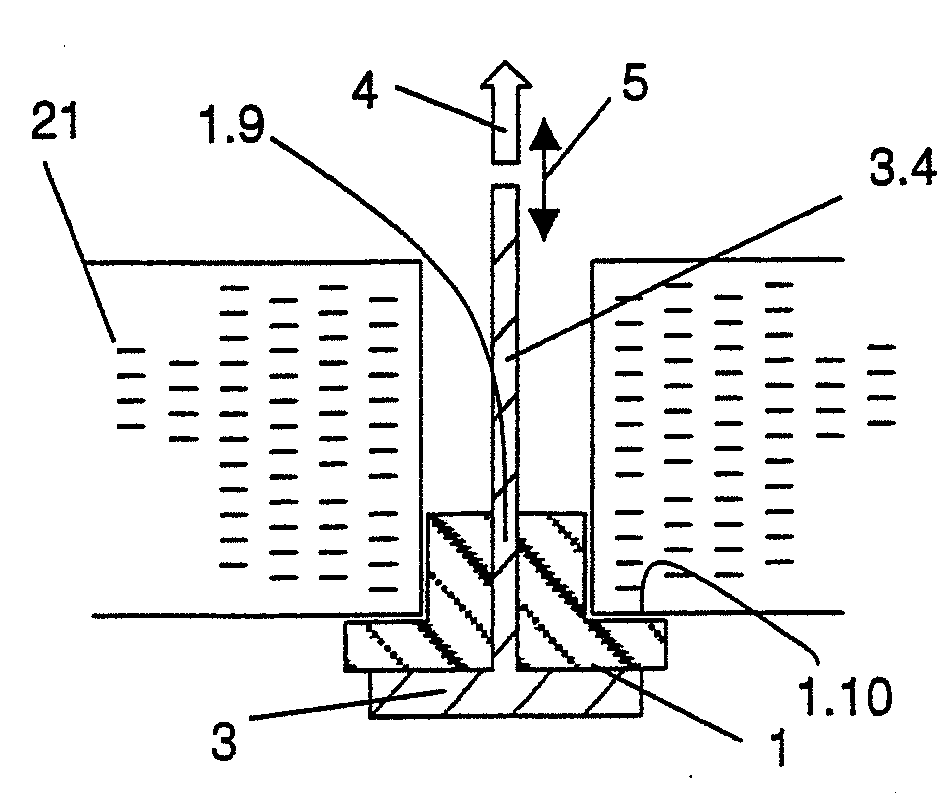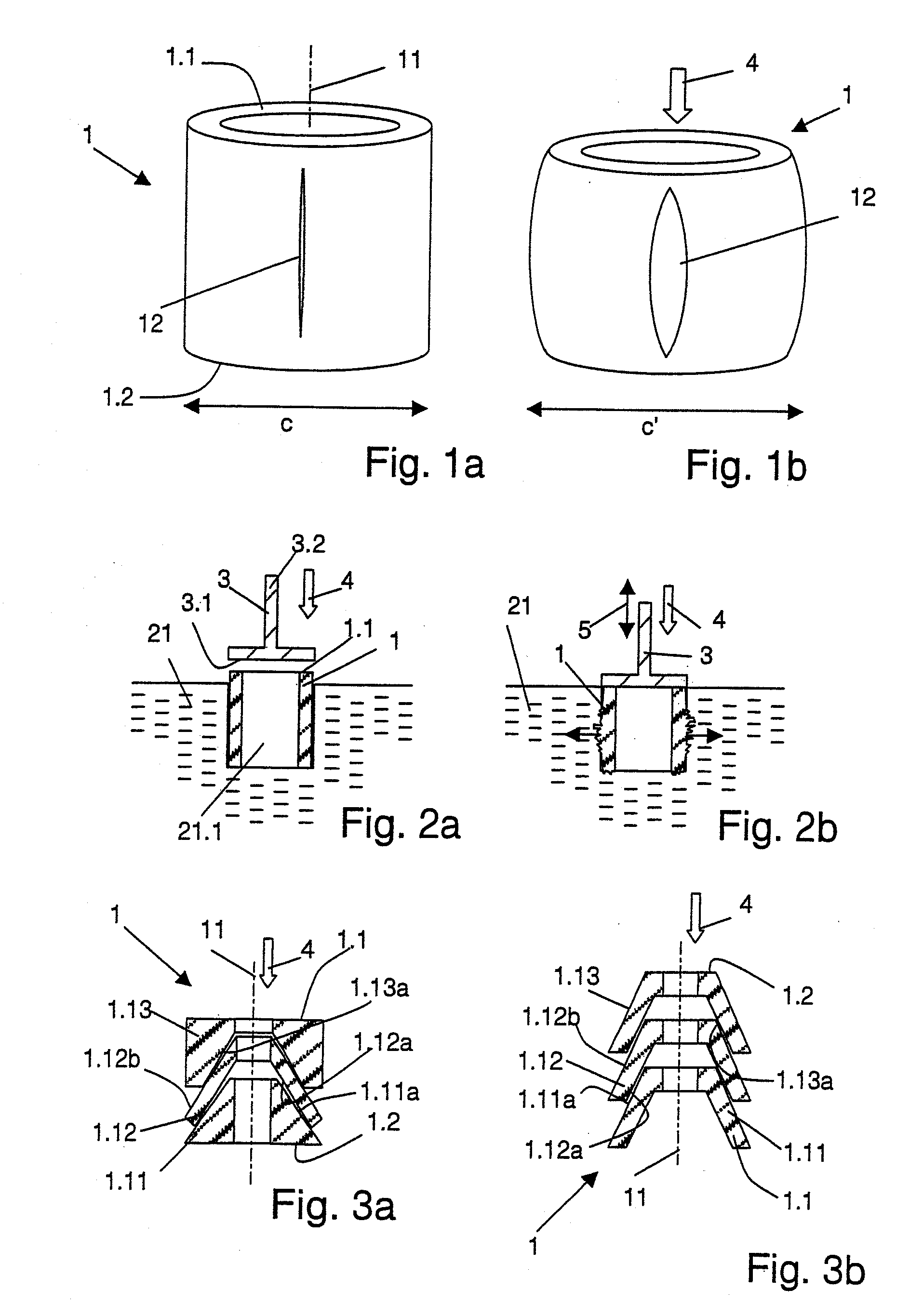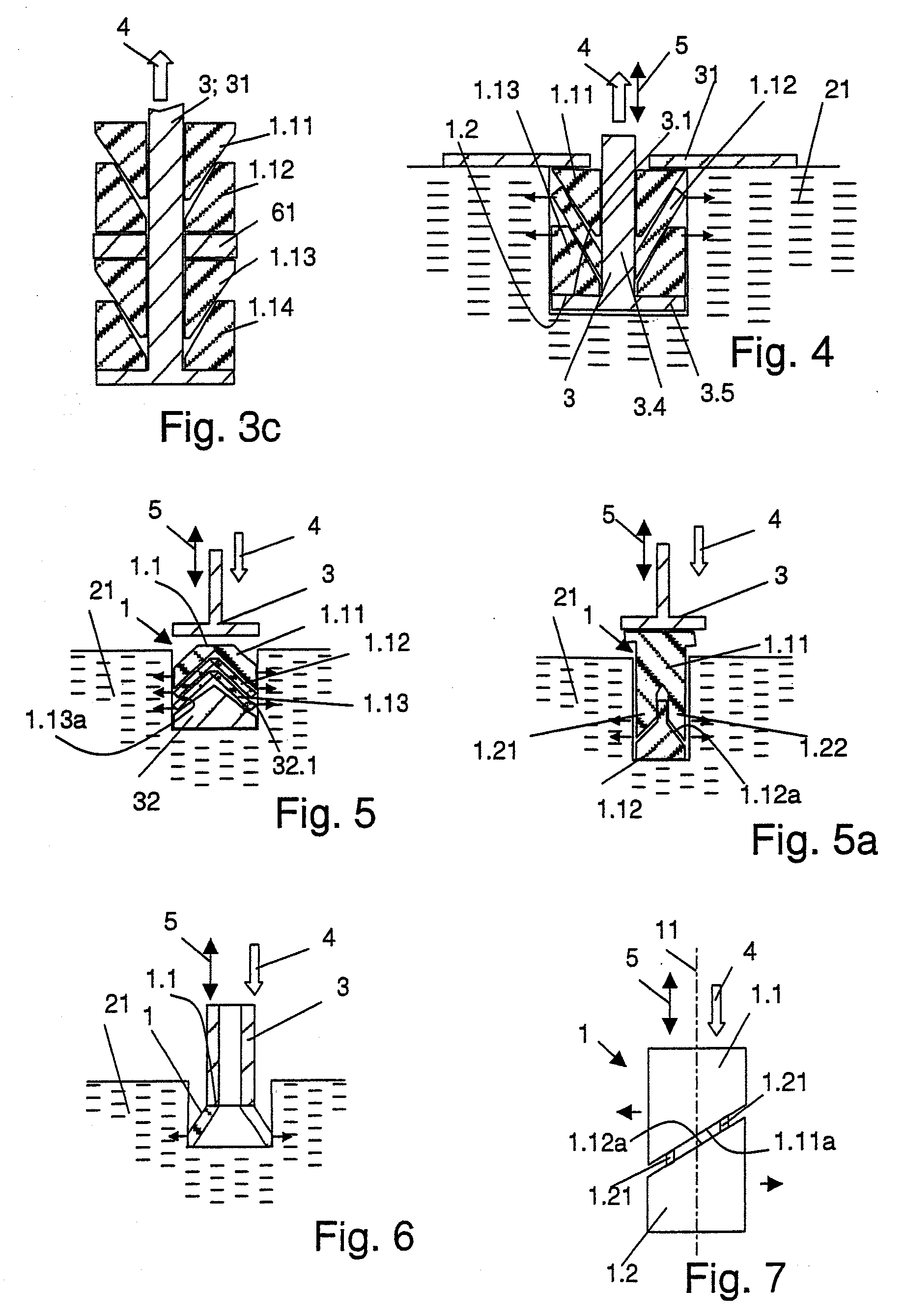Anchoring in a construction model
a construction model and anchoring technology, applied in the construction field, can solve the problem of not being able to excite a known connecting element with sufficient vibratory energy to ensure a reliable anchoring by the known methods, and achieve the effect of increasing the pressure in the lateral direction, increasing the friction force, and solid anchoring
- Summary
- Abstract
- Description
- Claims
- Application Information
AI Technical Summary
Benefits of technology
Problems solved by technology
Method used
Image
Examples
Embodiment Construction
[0098]The anchoring element 1 according to FIG. 1a is a first example of an anchoring element according to the first aspect of the invention which is suitable as a coupling sleeve for attaching a fitting on the object. The anchoring element is essentially tubular, consists of a thermoplastic material, and comprises a proximal end face 1.1 and a distal end face 1.2. The anchoring element further comprises at least one slot 12 extending approximately parallel to the axis 11 of the anchoring element; advantageously there are two, three or more than three slots arranged approximately equidistantly. Due to the slot or slots 12 the anchoring element is compressible by a compressing force 4 acting parallel to its axis (according to FIG. 1a, the axis 11 of the tubular anchoring element is also its compression axis). The anchoring element is depicted in a compressed state in FIG. 1b.
[0099]It is obvious that for achieving the desired compression a force must act upon the anchoring element fr...
PUM
| Property | Measurement | Unit |
|---|---|---|
| mechanical frequency | aaaaa | aaaaa |
| mechanical frequency | aaaaa | aaaaa |
| viscosity | aaaaa | aaaaa |
Abstract
Description
Claims
Application Information
 Login to View More
Login to View More - R&D
- Intellectual Property
- Life Sciences
- Materials
- Tech Scout
- Unparalleled Data Quality
- Higher Quality Content
- 60% Fewer Hallucinations
Browse by: Latest US Patents, China's latest patents, Technical Efficacy Thesaurus, Application Domain, Technology Topic, Popular Technical Reports.
© 2025 PatSnap. All rights reserved.Legal|Privacy policy|Modern Slavery Act Transparency Statement|Sitemap|About US| Contact US: help@patsnap.com



